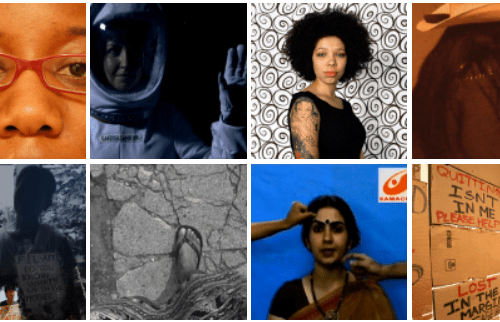I take the term “neoliberalism” as a useful reference to social, cultural, and political shifts that have occurred in the wake of economic globalization, particularly the shift of industrial production from the neocolonial metropole to the formerly colonized world that occurred during the 1970s and 1980s. In the United States, I see the shift as undergirding four key developments: (1) the decimation of the US working class and the unionization movement, with the African-American community being particularly hard-hit; (2) the rise of a newly empowered managerial class that sits atop the global empire of capital (hence, when combined with (1), a growing rise in inequality); (3) cuts to the tax base that not only provided fewer funds for government services, but which also left all levels of government in a weakened position in which they essentially had to compete against other governments (at municipal, state, and national levels) in order to retain and cultivate the sources of capital that remained; and (4) dramatic cuts to the welfare state (due to the prior three factors), followed by a significant upsurge in police-lead efforts to contain poverty and discontent.
The results of this shift can be seen in areas as diverse as:
- the rise of a racialized “underclass” and the sudden visibility of the poor to elite sectors in the early 1980s (homelessness, etc.);
- the sudden invisibility of the poor to elite sectors in the 1990s and 2000s (thanks to a five-fold increase in the prison rate and the rise of “quality of life” of zero tolerance policing);
- the partial replacement of manufacturing jobs with low-wage service positions, including many forms of labor focused on supporting the newly bolstered elite with intimate services (e.g., nanny care, domestic labor, sex work);shifts in familial/sexual/gender norms among both the marginally employed service sector and among the newly empowered managerial classes;
- and, shifts in activist strategies that reflect newly accentuated class divides within varying communities and a heightened reliance upon criminalization.
My own research1 illuminates these dynamics through a focus upon the experiences of individuals going through a US drug treatment court, a liberal innovation that has attracted much conservative support (it was even alluded to in the 2012 Republican Party Platform).2 Currently established on a statewide basis in New York, and prevalent in many other jurisdictions, drug courts allow those who have been convicted of a drug-related crime to undergo court-supervised treatment in lieu of a jail sentence. Though drug use is widely distributed throughout society, the local court I examined was filled with poor blacks and Latinos (4 percent white, 80 percent men). Only 50 percent had high school diplomas or GEDs, and one judge I interviewed said she had seen only one college-educated person come through the court in her three years presiding—a measure of how disproportionately the criminal justice system targets the nonwhite poor.
I spent months doing ethnography at the court, but became even more drawn in through the ethnographic work I conducted at one of the treatment centers that received clients from the court (as well as from other branches within the criminal justice system). I found a highly punitive system of treatment focused on instilling work-related forms of discipline and rule following (and very little focus upon self-exploration or other approaches common within middle-class therapeutic culture). Waking up early, doing one’s chores without complaint, following bureaucratic procedures, or even accepting verbal abuse from one’s superiors (the drug counselors)—all useful skills on the low-wage job market—these formed the core of “treatment.” Though clients were tested for drugs on a regular basis, counselors showed less interest in whether a participant was doing drugs than in how they were coping with what they termed a “drugs lifestyle” (or more colloquially, with “dope fiend behaviors”). To me, “dope fiend behaviors”—manipulating rules, scamming, lying—all seemed like normative behaviors that would help one survive a challenging, street-based social world. Movement from the informal street economy into the lower reaches of the formal economy thus seemed to form the crux of treatment, and indeed, gaining a job was a specific criterion to be achieved prior to release from the drug court.
Despite what I perceived as the abusiveness of the program, approximately one half of the participants indicated that they appreciated the program (the other half generally felt that it was only slightly better than prison, and a few actually chose to end their participation in drug court in order to simply serve their time). As such, I had to think carefully about the half that found value in this form of treatment, especially since many of the counselors had themselves undergone this sort of treatment, and were dedicated to its usefulness. It seemed to me that the program could indeed help individuals develop forms of self-discipline and agency that made low-wage labor possible. For individuals who either did not succeed within street life, or who were new to and scared of street life, the treatment facility offered a means through which they could both envision a more hopeful life and have a semi-respectable explanation as to why they failed in the past (i.e., drugs).
Perhaps not surprisingly, gender and sexual normativity were also at stake within the program. Not only were the goals significantly gendered—men were expected to develop a labor orientation, while women were expected not only to labor but to care for any children as well—but staff often also used gender- and sex-related insults to shame participants. A married woman who was having extramarital sex with another man in the program was called a “homewrecker” in front of the assembled group of clients, and had her sexual love letters read aloud. The also-married man, meanwhile, was told that he had “no respect for the mother of his children.” Overall, the program encoded a discourse in which a “drugs lifestyle” necessarily led to gendered forms of degradation (e.g., one becomes a “homewrecker”), while recovery involved a pathway toward gender respectability (e.g., as a “proper” worker and/or mother).
While I could understand the appeal of the program, I remain troubled that its goals were imposed upon people and by the way that it used conventional sources of shame to further its agenda. Another significant drawback was the fact that those who “failed” at treatment were not only blamed for their failure, but they were also sentenced to longer sentences than if they had not tried treatment in the first place, thereby intensifying the already intense levels of criminalization experienced by impoverished, nonwhite communities. While some drug court participants went as far as to proclaim, “thank God I was arrested!” others clearly suffered from the intense disciplinary pressure. With circumstances so constrained as to make low-wage labor an appealing alternative, the wish for gender normativity and limited forms of class advancement seemed to be the best hope that many of the participants could conceive.
It is for this reason, I argue, that an articulation of the complex relations of power and agency that exist within such facilities is needed in order to better understand contemporary modes of punishment and efforts at “rehabilitation.” In my forthcoming book, Using Drugs: Addiction and the Intimacies of the State, I show how these institutions seek to foster particular types of agency that pertain to neoliberal ideals of “productive citizenship” while disallowing others pertaining to a purported “drugs lifestyle:” a “lifestyle” which looks suspiciously like prior conceptions of a “culture of poverty.”3 The treatment process for this supposed “lifestyle” exhibits what Barbara Cruikshank calls a “will to empower,” in which one party seeks to undemocratically “liberate” the other.4 But whereas Foucault suggested that disciplines of the self often rely upon “pastoral power,”5 a form of power that is premised upon intimate knowledge of the inner workings of the soul to achieve its effects, here self-discipline is to be instilled through the enforcement of behavioral measures rather than through introspective therapies of any sort. Rather than creating knowledge of subjectivity, this “fuzzy edge” of the criminal justice system establishes a “hybrid therapeutic-punitive form” where “force is the best medicine.”6 Ultimately, I argue that state-mandated “treatment” for drug abuse still operates within a criminal justice context, examining ways in which this punitive model of rehabilitation works on the emotionally sensate body in order to foster a particular type of agency among those being treated. By disallowing certain forms of agency while facilitating others, criminal justice drug treatment regimes seek to bridge the aims of the state with the desires of the drug-using poor. It offers intensive probationary supervision and tutelage to a population deemed “low risk,” while placing the moral onus of poverty on the poor and avoiding deep structural change or critique. Even so, those analyzing the limited return of rehabilitative practice within the criminal justice system (whether in the form of drug courts, reentry programs, or efforts to counsel violent domestic partners) must pay attention to the powerful draws exerted by even these limited and coercive efforts.
- Kaye, Kerwin (2013) Rehabilitating the “drugs lifestyle”: Criminal justice, social control, and the cultivation of agency. Ethnography, 14(2): 207-32. [↩]
- 2012 Republican Party Platform. [↩]
- Lewis O (1966) The culture of poverty. Scientific American 215(4): 19–25. Lewis O (1968) La Vida: A Puerto Rican Family in the Culture of Poverty–San Juan and New York. London: Panther. [↩]
- Cruikshank B (1999) The Will to Empower: Democratic Citizens and Other Subjects. Ithaca, NY: Cornell University Press. [↩]
- Foucault M (1982) The subject and power. In: Dreyfus H and Rabinow P (eds) Michel Foucault: Beyond Structuralism and Hermeneutics. Chicago, IL: University of Chicago Press, pp. 208–226. [↩]
- Tiger, Rebecca. 2013. Judging Addicts: Drug Courts and Coercion in the Justice System. New York, NY: NYU Press. See also, Gowan T and Whetstone S (2012) Making the criminal addict: Subjectivity and social control in a strong-arm rehab. Punishment & Society 14(1): 69–93. [↩]




